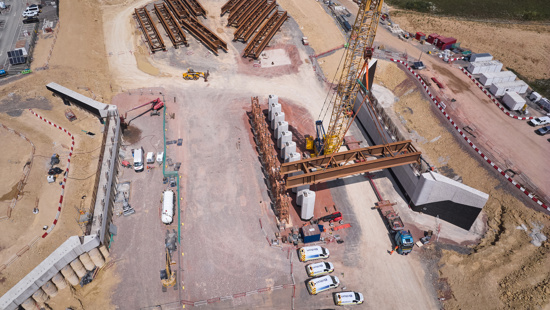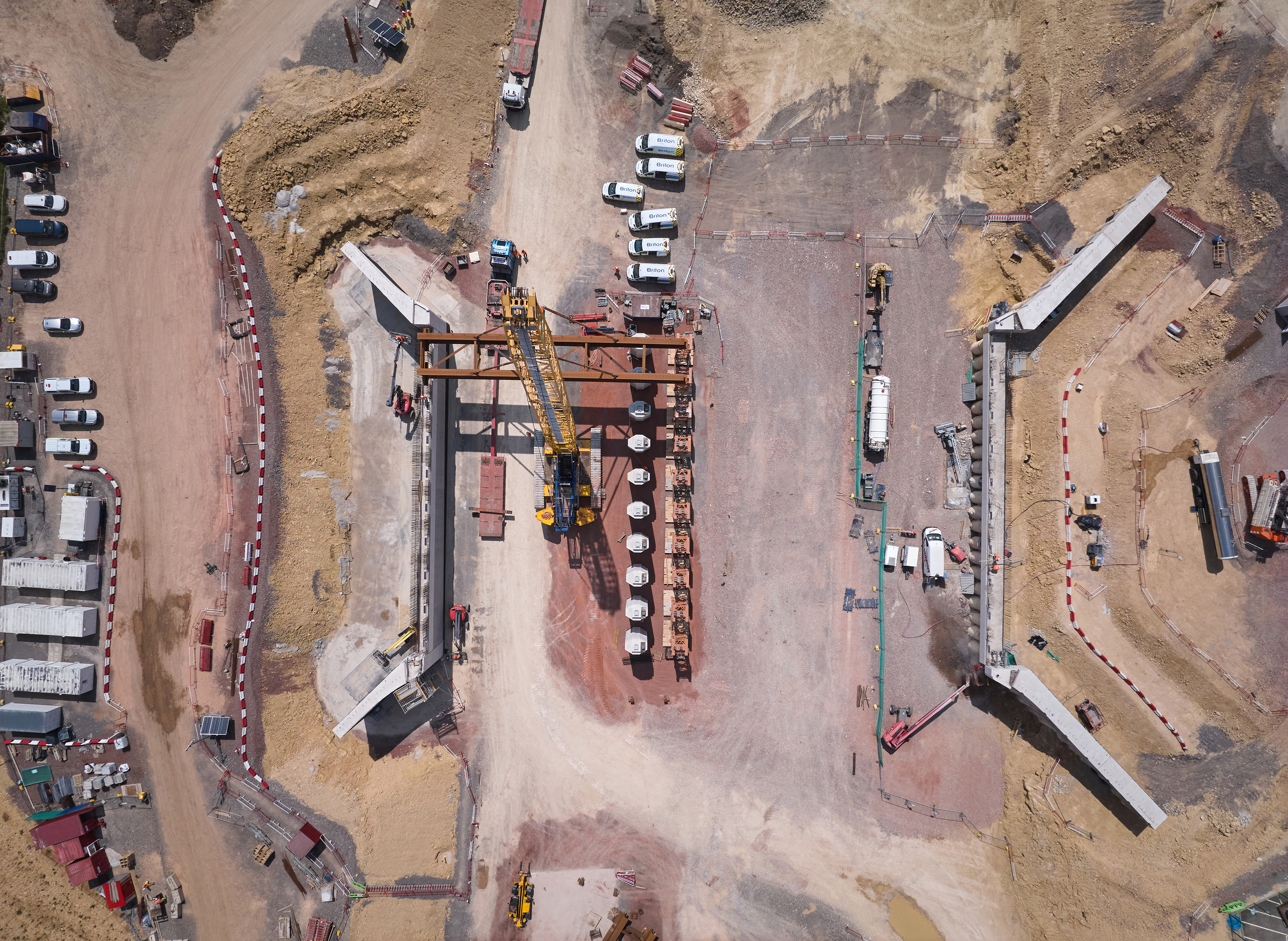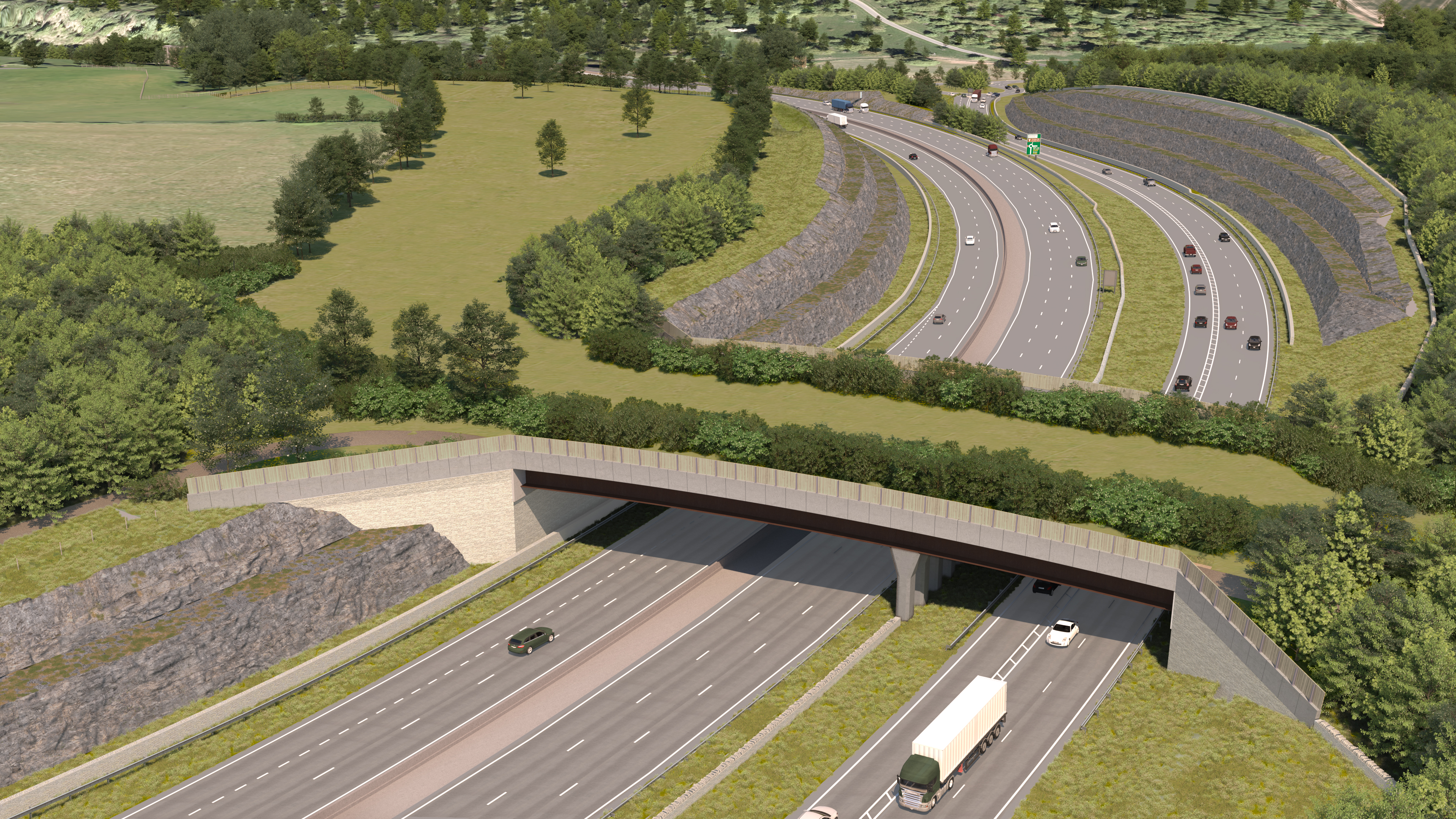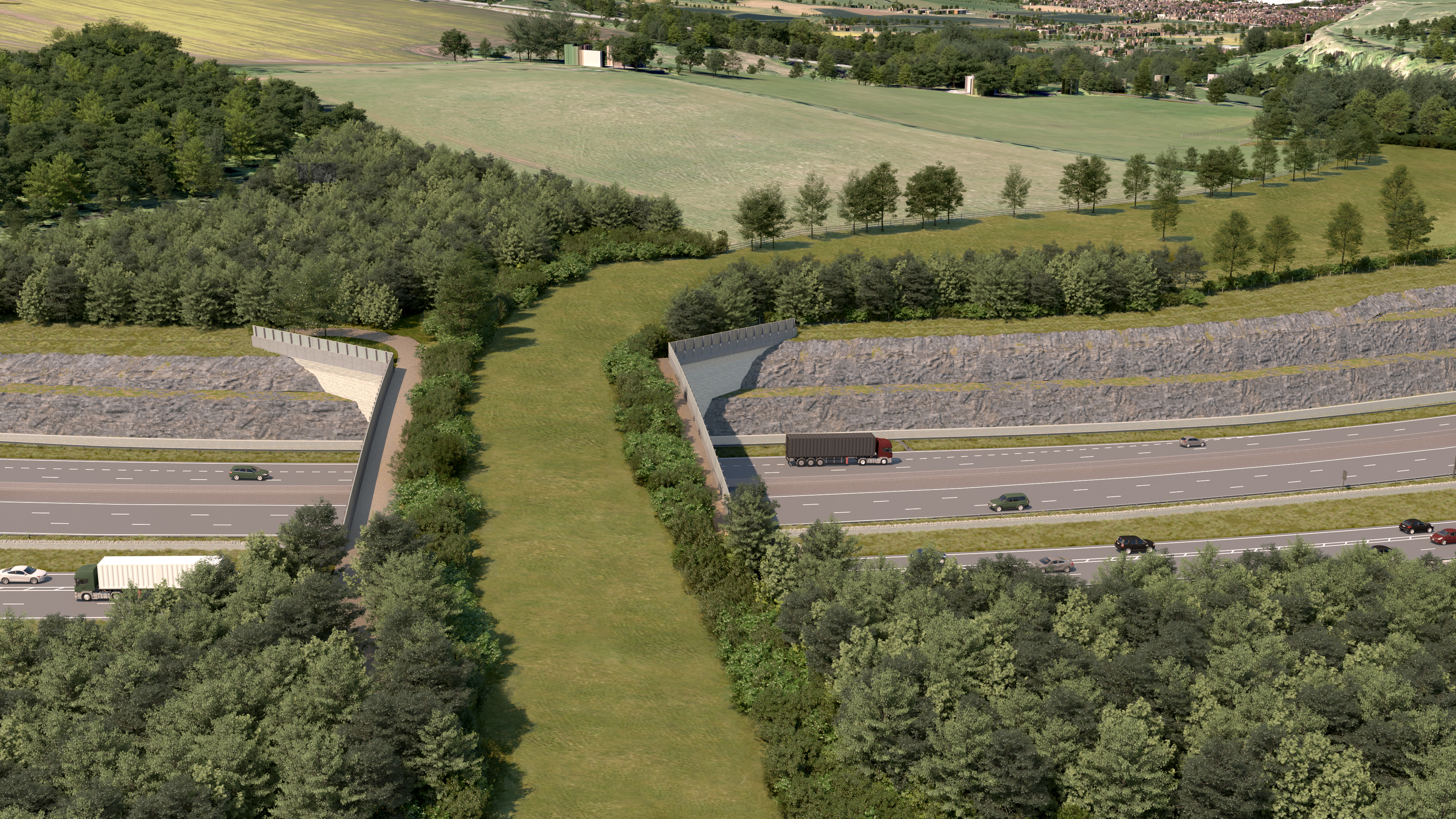National Highways goes big with Gloucestershire’s green bridge

National Highways is going big as construction begins on its fifth green bridge – one of the UK’s largest and Gloucestershire’s first.
As part of the major A417 Missing Link project, the government-owned company has begun lifting 10 huge steel beams to create the base of the environmental bridge.
Once lifted into place, the team will begin installing the bridge deck from the Gloucestershire Way bridge at Shab Hill, which will serve as a multi-purpose crossing over the new A417 for walkers, cyclists and horse riders, along with various wildlife species, including deer, badgers, voles and other small animals, insects and birds.
The multi-purpose bridge – 60m in length and 37m wide – spans eight lanes of the new dual carriageway and will not only provide better connectivity for wildlife but will also include a footpath and a bridleway for horse riders.
Planting on the bridge will mirror that of the landscape around it, including 27 metres of calcareous grassland and hedgerows.

Caption: Beams being lifted into place for the Gloucestershire Way bridge, which will span the new A417 Missing Link and eight lanes of traffic
Steve Foxley, National Highways’ Project Director for the A417 Missing Link, said: “We’re really proud of the environmental work being carried out as part of this landscape-led project, and the creation of one of the UK’s biggest environmental bridges is a fundamental part of that.
“Once completed, our bridge will be the fifth for National Highways, providing a safe crossing for various species of wildlife, as well as for walkers and horse riders.
“Along with other measures, this bridge is a testament to how we can integrate world-class environmental practices alongside vital transport improvements.
“From wildlife crossings to new habitats, we’ve taken great care to ensure that our work respects and enhances the stunning Cotswold landscape.”

Caption: National Highways is going big as construction begins on its fifth green bridge – one of the UK’s largest and Gloucestershire’s first
Natasha James, Senior Ecologist for Kier, added: “A lot of care has been taken before and during construction as part of a collaborative effort across the A417 Missing link scheme.
“We have a responsibility to ensure that we are leaving a positive legacy and delivering ecological and environmental benefits.
“It’s incredible to see the beams lifted into place for what will become a valuable habitat feature for many species, whilst also just being great for the landscape and ecology of the scheme.”

Caption: An artist’s impression of the new Gloucestershire Way crossing
Green bridges – first pioneered in France in the 50s and then refined in the Netherlands in the 90s – are now becoming an important part of the sustainability of infrastructure projects, by:
- creating a safe crossing point for wildlife movement;
- joining up habitats and connecting colonies, as they are also used by wildlife as a home in their own right;
- creating a crossing point for people and benefiting pollinators;
- integrating roads and railways into the surrounding landscape.
There are only a handful of green bridges across the country, and for National Highways, it represents the fifth such structure to be built across the Strategic Road Network.
The company, responsible for England’s major A roads and motorways, has already constructed green bridges over the A556 near Knutsford, the A21 at Scotney Castle in Sussex, while another green bridge features in the South West, as part of the A30 scheme in Cornwall, and another at Cockrow in Surrey, as part of the M25 Wisley interchange scheme.

Caption: The multi-purpose bridge – 60m in length and 37m wide – spans eight lanes of the new dual carriageway and will not only provide better connectivity for wildlife but will also include a footpath and a bridleway for horse riders
Following the construction of the bridge, it will eventually be seeded with calcareous grasslands and planted with other species.
Further planting will take place in the autumn, and after all planting work across the scheme, a five-year maintenance period will follow to ensure the successful bedding in and growth of all new trees and shrubs.

Caption: Another view of the Gloucestershire Way crossing
The landscape-led A417 scheme is not only creating a vital transport link in the Cotswolds, but also incorporates world-class environmental practices that respect and enhance the surrounding landscape and habitats, including:
- Dual Use Crossings: Two more partially planted crossings will be erected to allow traffic to flow over the main road.
- Biodiversity: The planting of over 100,000 trees and over 80 hectares of calcareous grasslands to ensure the scheme leaves a positive biodiversity legacy.
- Material Recycling: Excavated site rock is recycled on-site using six crusher plants, breaking down the rock to be used as the new base layer for the road.
- Bat Underpass and Structures: Dedicated bat underpass, bat boxes, structures and habitats such as dead hedging, to support local bat populations and reduce disruption to wildlife.
- Bird Fencing: During construction, high fencing will alter the flight paths of birds to limit collisions with cars.
- Animal Translocation: Translocated over 2,000 reptiles and over 100 Roman snails to ensure the scheme had minimal impact on nature in the area.
- Landscape and Acoustic Bunding: Extensive bunding designed to reduce noise impact and enhance the visual appeal of the landscape.
- Drystone Walling: 7.5km of drystone walling, in keeping with the current landscape and supporting biodiversity.
- Repurposed: A repurposed section of the existing A417, transformed into a ‘purpose-built’ restricted byway for WCH users, including disabled users and carriages, planted with species-rich grassland, native hedgerows, and trees.
The latest information on the scheme is available at National Highways’ A417 Missing Link web page.
Notes to Editors
National Highways is the wholly government-owned company responsible for modernising, maintaining and operating England’s motorways and major A roads.
Real-time traffic information for England’s motorways and major A roads is available via the Traffic England website, local and national radio travel bulletins, electronic road signs and mobile apps. Local Twitter services are also available.
For further information please contact National Highways' press office (24hrs) on 0844 693 1448 and select the most appropriate option:
Option 1: National enquiries (9am to 5.30pm) and out of hours for urgent enquiriesOption 2: North West (9am to 5.30pm)Option 3: Yorkshire and North East (9am to 5.30pm)Option 4: West Midlands (9am to 5.30pm)Option 5: East Midlands (9am to 5.30pm)Option 6: East (9am to 5.30pm)Option 7: South East (9am to 5.30pm)Option 8: South West (9am to 5.30pm)



